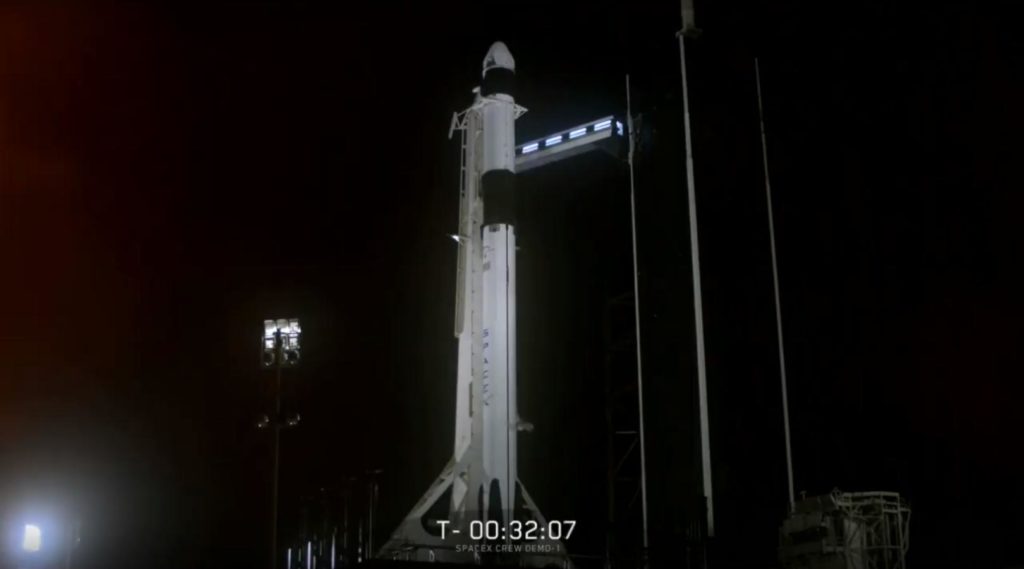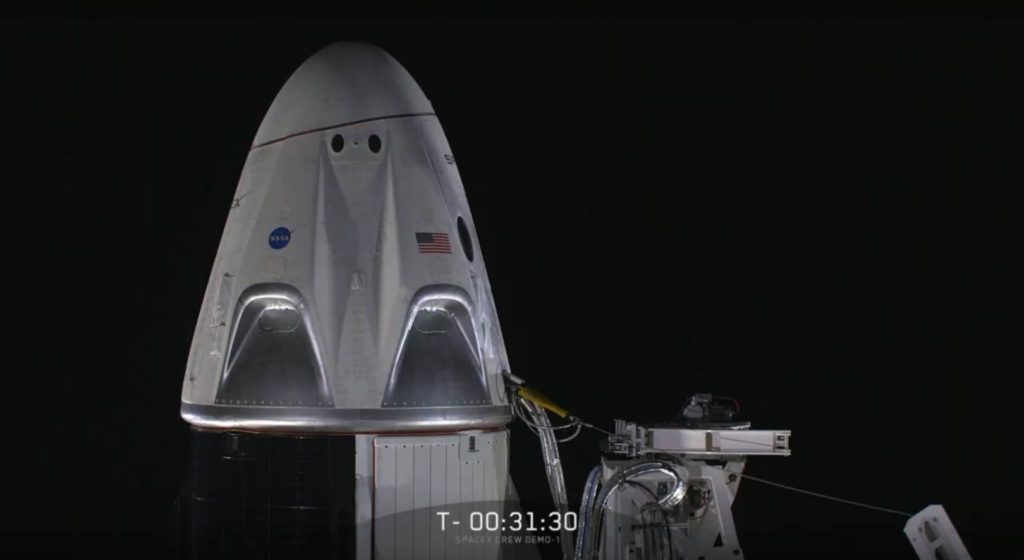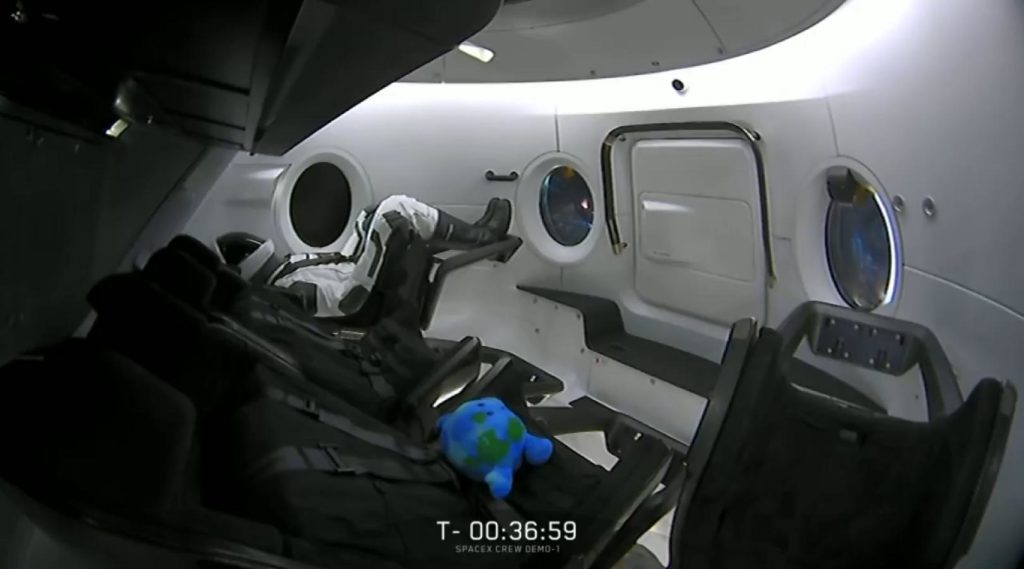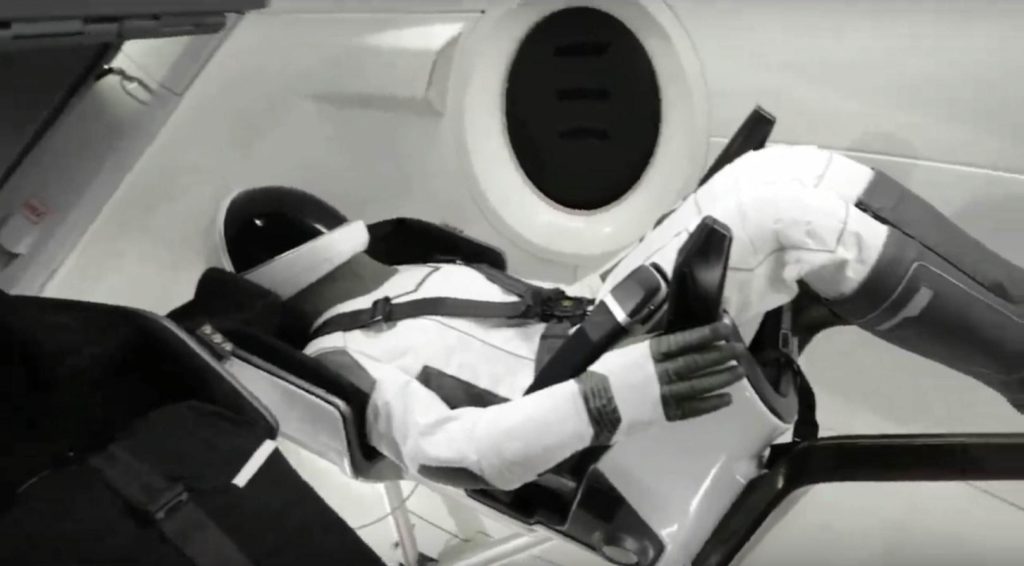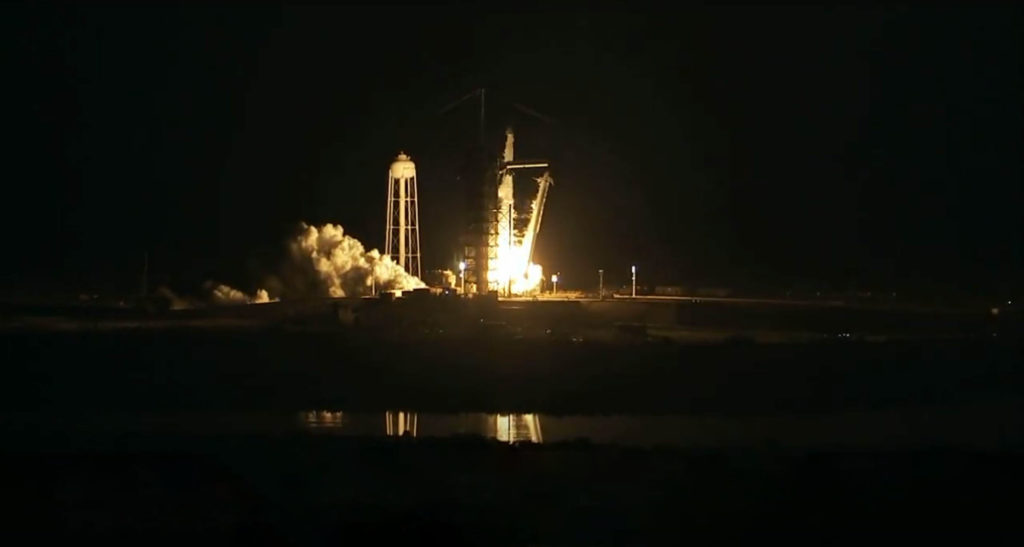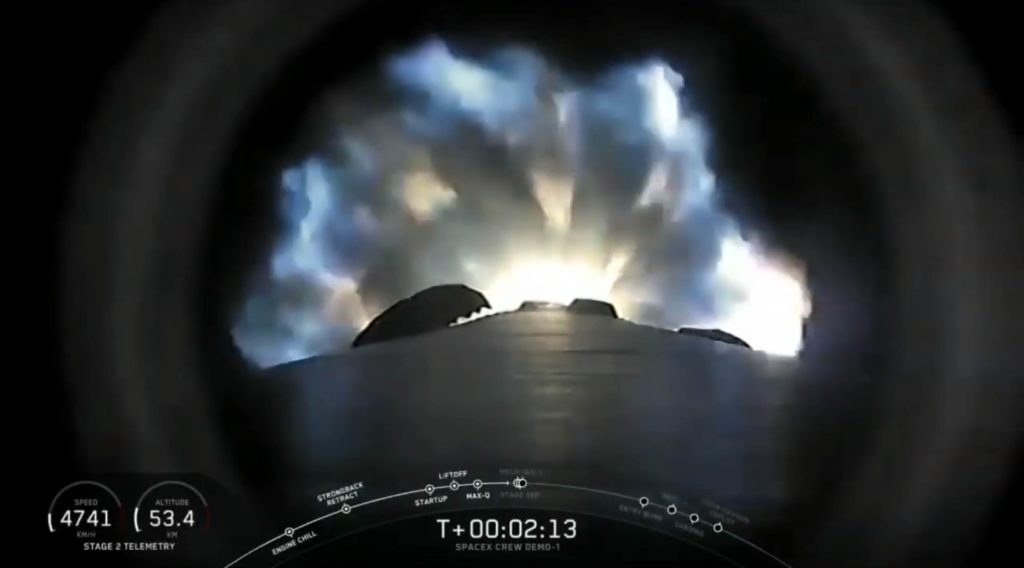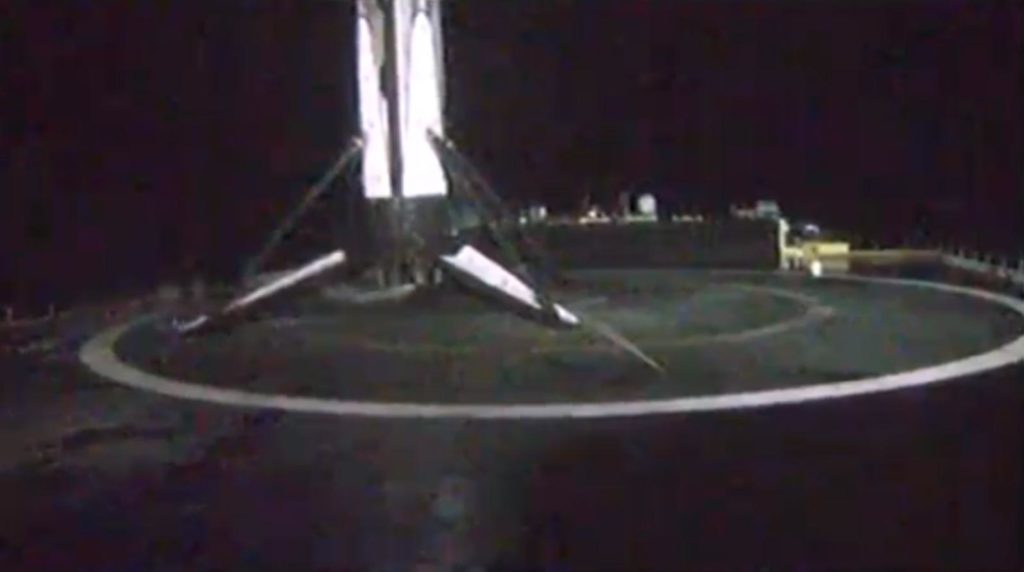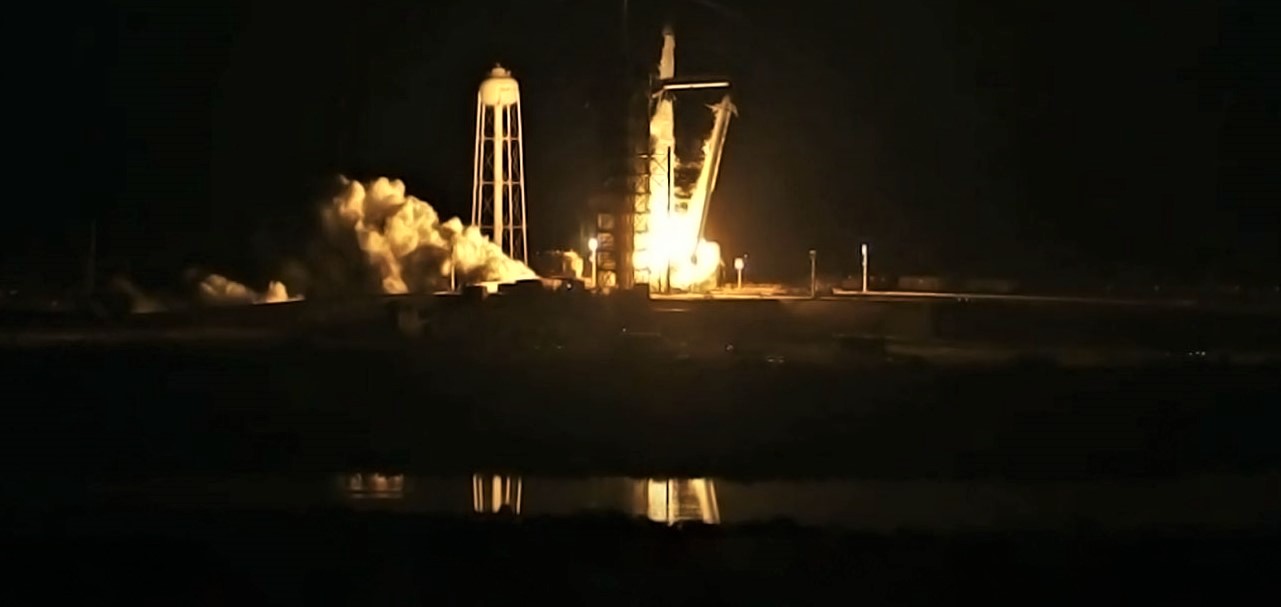
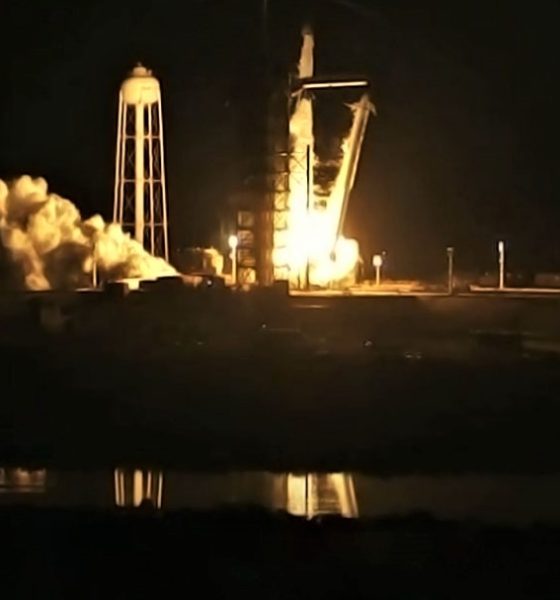
SpaceX
SpaceX’s Crew Dragon one step closer to human spaceflight after flawless launch
SpaceX has completed the first half of its critical Crew Dragon test flight, launching the brand new spacecraft into low Earth orbit (LEO) on the back of one of its workhorse Falcon 9 rockets. The rocket performed nominally, successfully sending the human-rated vehicle on its way towards the International Space Station (ISS).
Scheduled to dock with the ISS as early as 6 am EST (13:00 UTC) March 3rd, Crew Dragon will now face the real challenge of this demonstration mission, successfully operating in orbit and autonomously docking with the ISS. Along the way, SpaceX will be flight-testing a number of technologies and systems new to the company, while also providing reams of data that will help both SpaceX and NASA determine whether Crew Dragon performed as intended and is truly ready to carry astronauts into orbit.
https://twitter.com/_TomCross_/status/1101764440800878593
While this successful launch is a critical milestone for DM-1, Crew Dragon, SpaceX, and NASA, it’s hard to say there is anything particularly shocking about its successful completion. Including this launch, SpaceX has now successfully launched Falcon 9 42 times in a row since January 2017, including seven orbital launches and ISS missions with Cargo Dragon, a heavily proven spacecraft with 16 successful missions since its 2012 debut. Put simply, SpaceX has an incredibly dense volume of experience successfully launching, landing, recovering, and refurbishing orbital-class rockets and spacecraft, as well as a proven track record of success and an ability to confront and move past challenging vehicle failures.
Crew Dragon demo mission (DM-1) is set to launch early tomorrow morning, March 2, at 2:49 a.m. EST from Kennedy Space Center. What an absolutely breathtaking scene at LC-39A. #spacex #nasa #CrewDragon #falcon9 pic.twitter.com/T95wCumGzq
— Pauline Acalin (@w00ki33) March 1, 2019
Crew Dragon’s successful launch is no less of a major achievement, even if it was about as much of a known quantity as any other Falcon 9 mission. The real challenge ahead of the spacecraft is successfully demonstrating the efficacy of its design and operations in space, particularly while interacting and docking with the ISS. Prior to tomorrow morning, all SpaceX Dragons have berthed with the ISS, meaning that they effectively come up from underneath the ISS (a lower orbit), stop a few meters away, and are ‘grappled’ by a large robotic arm (known as Canadarm2) that also attaches the spacecraft to a docking port. If – at any point during the pre-berthing approach – Cargo Dragon were to lose control, the spacecraft would essentially fall back down the gravitational hill it had just climbed, a built-in abort that would nominally prevent the spacecraft from impacting the Station in most failure scenarios.
The launch of Crew Dragon demo (DM-1) as seen from the roof of NASA’s Vehicle Assembly Building. What a powerful and moving mission. Another step closer! #spacex #nasa #CrewDragon pic.twitter.com/aWIPtDcVir
— Pauline Acalin (@w00ki33) March 2, 2019
Crew Dragon, on the other hand, has been designed to dock with the ISS. Generally speaking, this means that the spacecraft will approach the Station side-on, as if it were a car accelerating faster than another car in the same ‘lane’. While there are many built-in points during the docking approach where Crew Dragon will halt all forward movement, the differing docking approach means that any loss of control or contact while on a vector towards the ISS could mean that it is unable to abort, significantly increasing the likelihood of an impact event in worst-case scenarios. While Crew Dragon is designed with extreme redundancy and fault-tolerance in mind, the stakes are definitively higher compared to Cargo Dragon.
Liftoff of Dragon 2 at 2:49am! SpaceX’s first flight of their new capsule preparing to take astronauts back to the International Space Station from American soil.
See the full launch gallery and support NASAspaceflight by subscribing to L2: https://t.co/whUFQd0FNU pic.twitter.com/TIhJxCSM8j
— Brady Kenniston (@TheFavoritist) March 2, 2019
Conscious of this fact, the new spacecraft will be tasked with completing a significant number of on-orbit maneuvers to verify nominal performance before allowing the autonomous vehicle to attempt a docking with the ISS. While that docking attempt is scheduled to occur as early as 6 am EST (13:00 UTC), live coverage – hosted by both NASA and SpaceX – will begin around 3:30 am EST (10:30 UTC) on Sunday, March 3rd. While these on-orbit webcasts can admittedly be rather dry compared to the thrill of launch, it will arguably be the most significant and mission-critical portion of Crew Dragon’s launch debut, alongside the spacecraft’s safe reentry and Atlantic Ocean landing and recovery. Follow along live at spacex.com/webcast.
Check out Teslarati’s newsletters for prompt updates, on-the-ground perspectives, and unique glimpses of SpaceX’s rocket launch and recovery processes!

Elon Musk
Elon Musk’s Biggest Revelations on AI, Robots, and the Future of Work from the Moonshots Podcast

Elon Musk’s appearance on the Moonshots with Peter Diamandis podcast was packed with bold predictions, candid admissions, and surprising tech insights. The nearly three-hour conversation covered everything from artificial intelligence to humanoid robots, geopolitics, and the future of work. Here are the top 10 most intriguing takeaways:
-
Aggressive AGI Timeline Predictions
Musk offered a detailed view on when artificial general intelligence (AGI) could emerge, suggesting it may arrive sooner than many expect, emphasizing both transformative potential and risks.
-
U.S. vs. China in the AI Race
He discussed the strategic competition between the United States and China over AI development, noting that geopolitical dynamics will shape how and who leads in the next decades.
-
Future of Job Markets
Musk touched on how AI and automation could reshape employment, predicting massive boosts in productivity alongside potential disruptions in traditional work structures.
-
Clean Energy Transition
A recurring theme was the role of clean energy in future economies, with Musk reiterating the importance of scaling sustainable power generation and storage.
-
Humanoid Robots Are Coming
On the podcast, Musk elaborated on Tesla’s work on humanoid robots, hinting at timelines and applications that go beyond factories to general-purpose assistance.
-
Tesla Roadster “Last Human-Driven Car”
Outside the core discussion topics, Musk teased features of the upcoming Tesla Roadster — calling it “the best of the last of the human-driven cars” and suggesting safety won’t be its main selling point.
-
The Role of AI in Clean Energy and Robotics
Linking AI to both energy optimization and robotics, Musk explained how smarter systems could accelerate decarbonization and task automation across industries.
-
U.S. Innovation Leadership
Musk argued that maintaining American leadership in key tech sectors like AI, space, and robotics should be a national priority, with thoughtful policy and investment.
-
Job Creation vs. Job Elimination
While acknowledging automation’s disruptive effects, he also outlined scenarios where new industries and opportunities could emerge, particularly in AI, space, and advanced manufacturing.
-
Long-Term Vision for Humanity
Throughout the conversation, Musk revisited his long-term philosophical views — including a belief in humanity’s responsibility to become a multi-planetary and technologically empowered species.
Whether you agree with Musk’s optimism or not, the podcast offers a window into the thinking of one of the most influential figures in tech today, in and why his visions continue to spark debate and inspiration.
Elon Musk
Starlink achieves major milestones in 2025 progress report
Starlink wrapped up 2025 with impressive growth, adding more than 4.6 million new active customers and expanding service to 35 additional countries, territories, and markets.

Starlink wrapped up 2025 with impressive growth, adding more than 4.6 million new active customers and expanding service to 35 additional countries, territories, and markets. The company also completed deployment of its first-generation Direct to Cell constellation, launching over 650 satellites in just 18 months to enable cellular connectivity.
SpaceX highlighted Starlink’s impressive 2025 progress in an extensive report.
Key achievements from Starlink’s 2025 Progress
Starlink connected over 4.6 million new customers with high-speed internet while bringing service to 35 more regions worldwide in 2025. Starlink is now connecting 9.2 million people worldwide. The service achieved this just weeks after hitting its 8 million customer milestone.
Starlink is now available in 155 markets, including areas that are unreachable by traditional ISPs. As per SpaceX, Starlink has also provided over 21 million airline passengers and 20 million cruise passengers with reliable high-speed internet connectivity during their travels.
Starlink Direct to Cell
Starlink’s Direct to Cell constellation, more than 650 satellites strong, has already connected over 12 million people at least once, marking a breakthrough in global mobile coverage.
Starlink Direct to Cell is currently rolled out to 22 countries and 6 continents, with over 6 million monthly customers. Starlink Direct to Cell also has 27 MNO partners to date.
“This year, SpaceX completed deployment of the first generation of the Starlink Direct to Cell constellation, with more than 650 satellites launched to low-Earth orbit in just 18 months. Starlink Direct to Cell has connected more than 12 million people, and counting, at least once, providing life-saving connectivity when people need it most,” SpaceX wrote.
Elon Musk
Starlink passes 9 million active customers just weeks after hitting 8 million
The milestone highlights the accelerating growth of Starlink, which has now been adding over 20,000 new users per day.

SpaceX’s Starlink satellite internet service has continued its rapid global expansion, surpassing 9 million active customers just weeks after crossing the 8 million mark.
The milestone highlights the accelerating growth of Starlink, which has now been adding over 20,000 new users per day.
9 million customers
In a post on X, SpaceX stated that Starlink now serves over 9 million active users across 155 countries, territories, and markets. The company reached 8 million customers in early November, meaning it added roughly 1 million subscribers in under seven weeks, or about 21,275 new users on average per day.
“Starlink is connecting more than 9M active customers with high-speed internet across 155 countries, territories, and many other markets,” Starlink wrote in a post on its official X account. SpaceX President Gwynne Shotwell also celebrated the milestone on X. “A huge thank you to all of our customers and congrats to the Starlink team for such an incredible product,” she wrote.
That growth rate reflects both rising demand for broadband in underserved regions and Starlink’s expanding satellite constellation, which now includes more than 9,000 low-Earth-orbit satellites designed to deliver high-speed, low-latency internet worldwide.
Starlink’s momentum
Starlink’s momentum has been building up. SpaceX reported 4.6 million Starlink customers in December 2024, followed by 7 million by August 2025, and 8 million customers in November. Independent data also suggests Starlink usage is rising sharply, with Cloudflare reporting that global web traffic from Starlink users more than doubled in 2025, as noted in an Insider report.
Starlink’s momentum is increasingly tied to SpaceX’s broader financial outlook. Elon Musk has said the satellite network is “by far” the company’s largest revenue driver, and reports suggest SpaceX may be positioning itself for an initial public offering as soon as next year, with valuations estimated as high as $1.5 trillion. Musk has also suggested in the past that Starlink could have its own IPO in the future.
